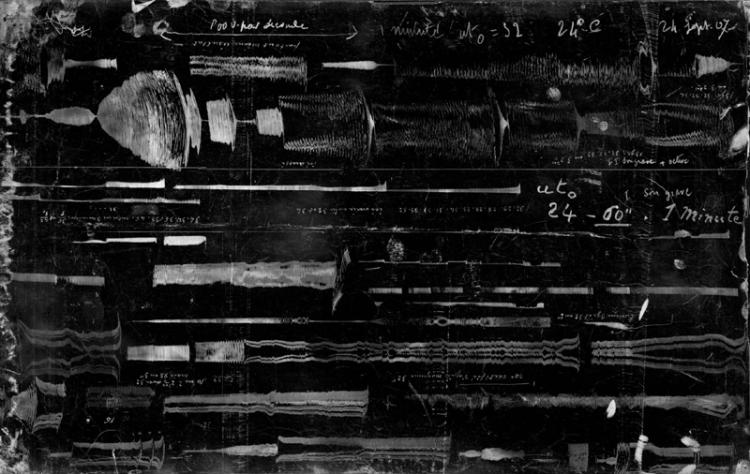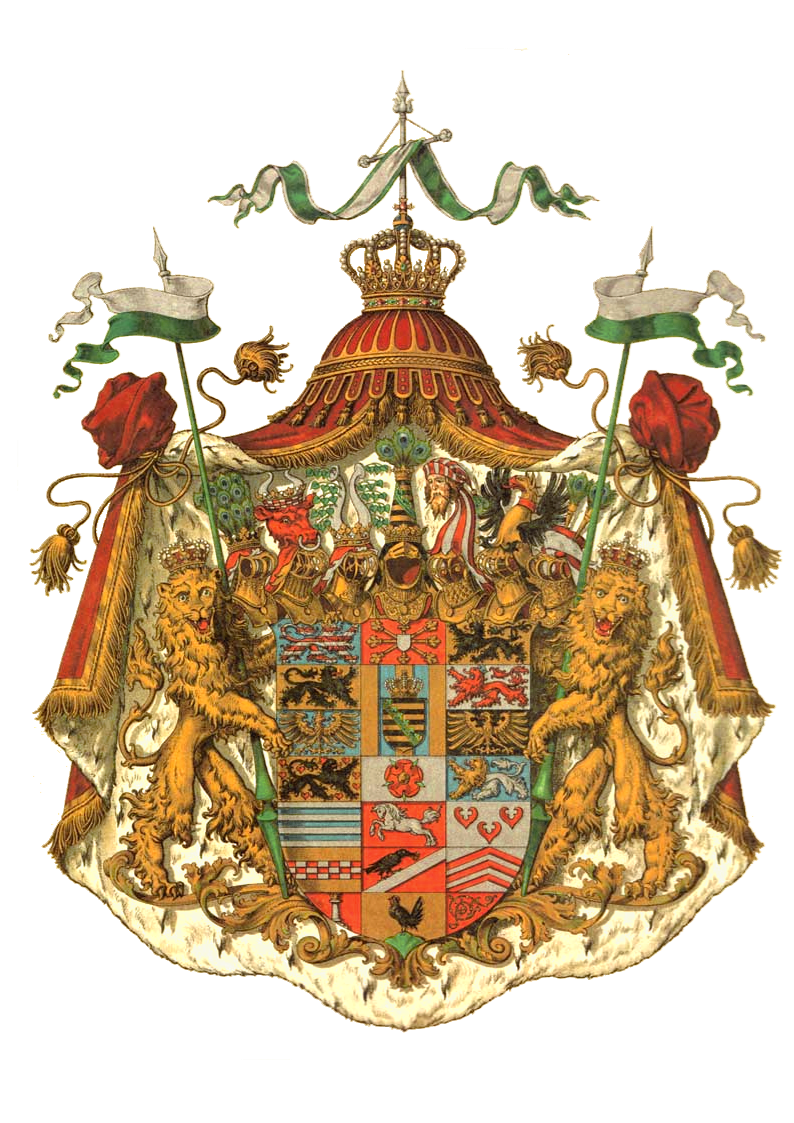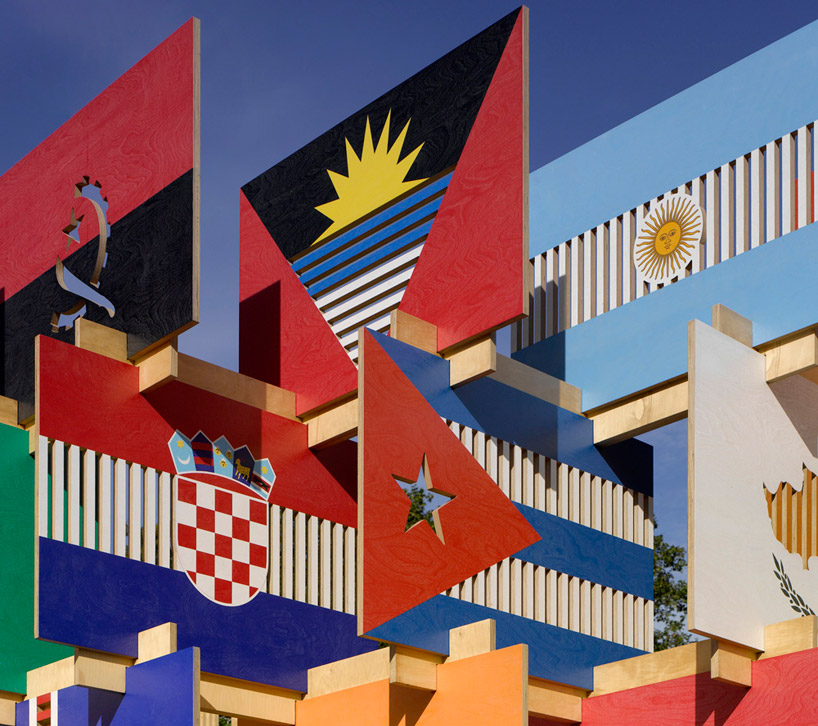Markup Languages in Art - Part 3: Chorus Lines
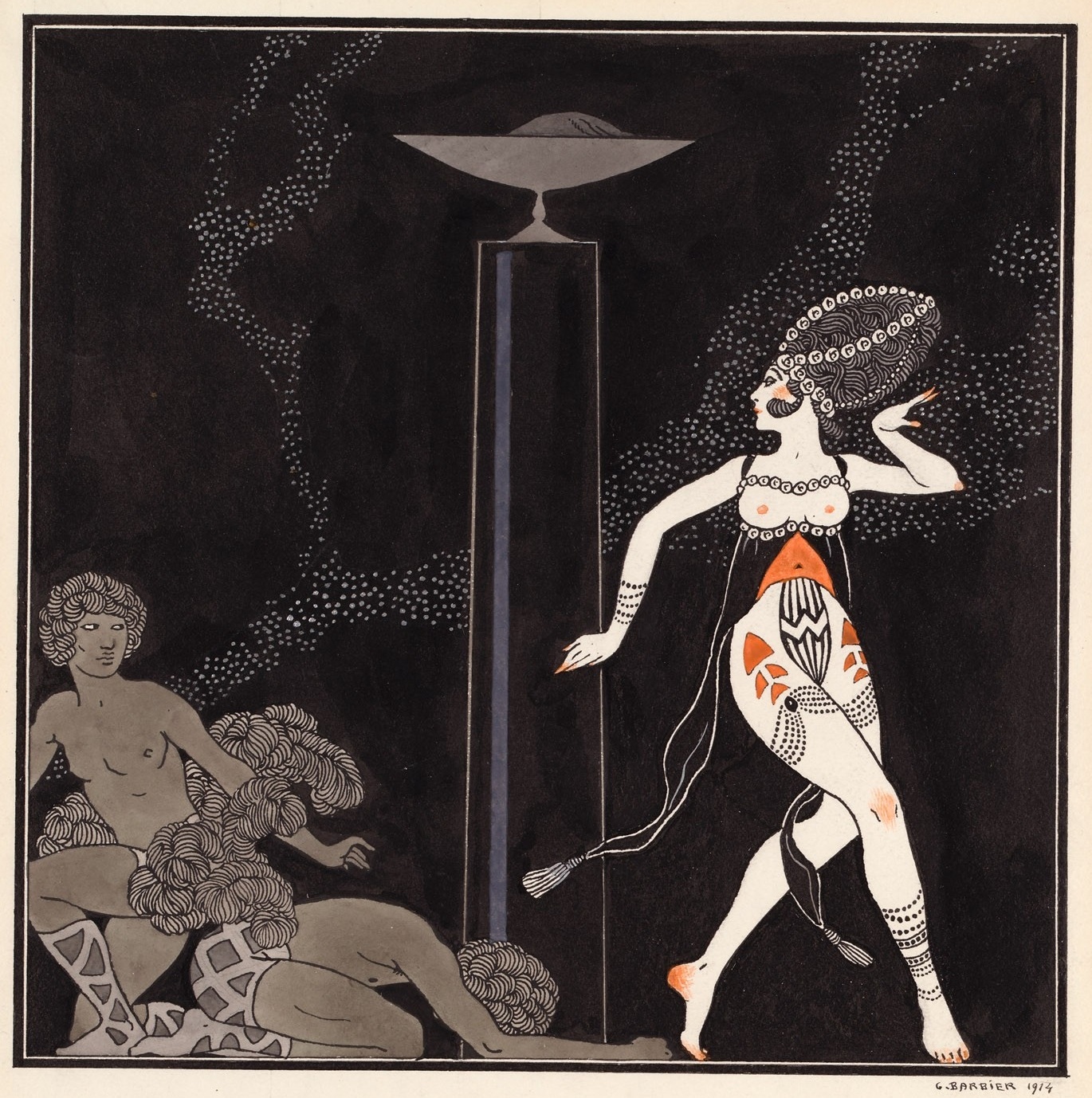 Bibliodyssey: The Ballets Russes
Bibliodyssey: The Ballets Russes
Click on any image to view its source.
"Labanotation (LN) or Kinetography Laban is a notation system for recording and analyzing human movement."
Explore other forms of dance notation here.
Gabriel Sizes, Etude Expérimentale d’Acoustique Musicale, 1920, via Bibliodyssey
"I design fractal algorithms using a visual application of music theory. I manipulate it in photoshop programs to create abstract artwork. I am aspiring to teach and share this process as well as make a living doing so!" - Alan Addison
CAP (Graffiti Analysis Series), 2012 by Evan Roth, via The Creators Project
"SML (Scratch Markup Language) is a new file format for recording and replaying turntablism. We’ve developed open-source tools for accurately capturing the record and crossfader movements of a scratch DJ, allowing us to analyze, transcribe, and recreate scratch performances. We want to do for turntablism what Graffiti Markup Language has done for tagging — especially teaching giant robot arms how to scratch." Ed: Unfortunately it looks as though this project and its related sites are no longer being updated.
Read Markup Languages in Art, Part 1: Vexing Ology
Read Markup Languages in Art, Part 2: Durer's Rhinocerous
Markup Languages in Art - Part 2: Durer's Rhinocerous
"On February 27, 2013, students in Lynda Barry’s “Unthinkable Mind” class at the University of Wisconsin-Madison were given a piece of paper and a flair pen and asked to draw a picture that they couldn’t see. Professor Old Skull was the only one who could see the picture, and she described it line by line, asking them to draw along with the description. What happened? The picture Professor Old Skull was describing appears at the end of the video."
[Professor Lynda got this great idea from Robert Brinkerhoff.]
Click on any image to view its source.
"The absurd rendering of many of the animals comes about because the engravers/artists working on the project did not actually see the animals. They had to rely on descriptions and their imagination and, as was the fashion of the time, the animals were placed in contrived settings and often given human facial qualities, which only serves to heighten the sense of bizarre. And thankful we are too." - Bibliodyssey
 "Despite these repeated assurances of their fidelity to nature, the colors used in the paintings are applied, more often than not, in a totally arbitrary fashion and bear no resemblance whatsoever to those of the living animals. …We learn further that Sambia or Loop-Visch, an anglerfish of the family Antennariidae, was captured by the artist on the sand: 'I kept it alive for three days in my house; it followed me everywhere with great familiarity, much like a little dog.'"
"Despite these repeated assurances of their fidelity to nature, the colors used in the paintings are applied, more often than not, in a totally arbitrary fashion and bear no resemblance whatsoever to those of the living animals. …We learn further that Sambia or Loop-Visch, an anglerfish of the family Antennariidae, was captured by the artist on the sand: 'I kept it alive for three days in my house; it followed me everywhere with great familiarity, much like a little dog.'"
- Theodore W. Pietsch, catalogue introduction, Samuel Fallours' Tropical Fishes of the East Indies (Taschen)
"Dürer's Rhinoceros is the name commonly given to a woodcut executed by German painter and printmaker Albrecht Dürer in 1515. The image was based on a written description and brief sketch by an unknown artist of an Indian rhinoceros that had arrived in Lisbon earlier that year. Dürer never saw the actual rhinoceros, which was the first living example seen in Europe since Roman times."
"Until the late 1930s, Dürer's image appeared in school textbooks in Germany as a faithful image of the rhinoceros."
Markup Languages in Art - Part 1: Vexing Ology
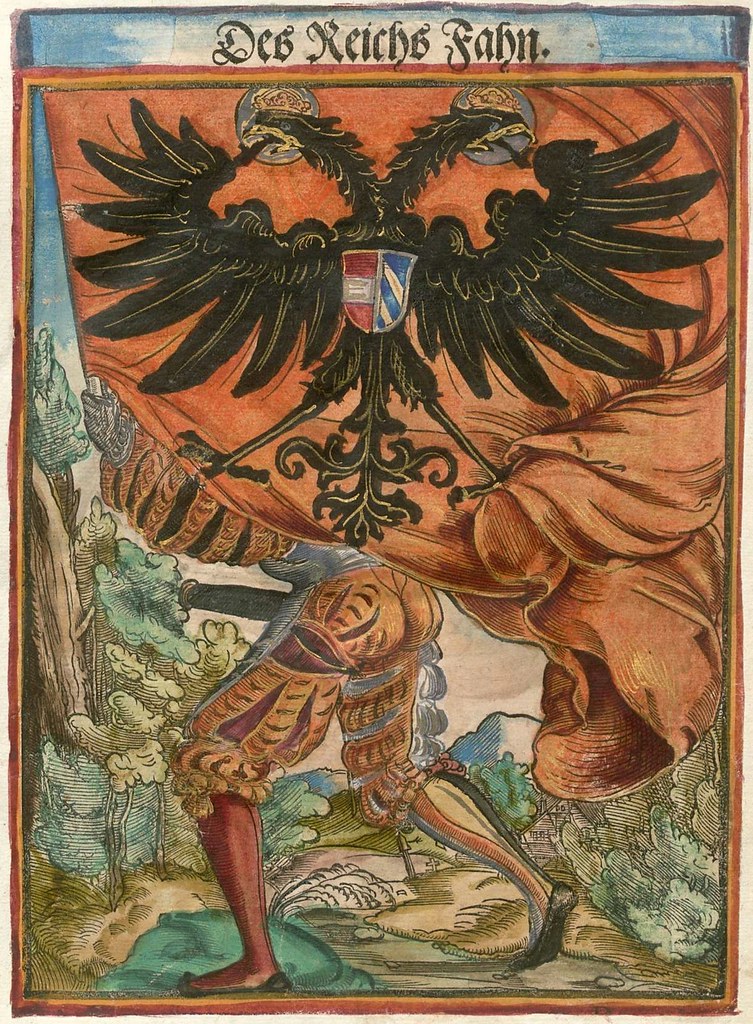 Click on any image to view its source.
Click on any image to view its source.
"To marshal two or more coats of arms is to combine them in one shield, to express inheritance, claims to property, or the occupation of an office." - Heraldry
"In heraldry and heraldic vexillology, a blazon is a formal description of a coat of arms, flag or similar emblem, from which the reader can reconstruct the appropriate image. ...Blazon also refers to the specialized language in which a blazon is written, and, as a verb, to the act of writing such a description. This language has its own vocabulary, grammar and syntax, or rules governing word order, which becomes essential for comprehension when blazoning a complex coat of arms."
Arms of Östergötland, Sweden: Gules a griffin with dragon wings, tail and tongue rampant Or armed, beaked, langued and membered azure between four roses argent.
Vexillology is the "scientific study of the history, symbolism, and usage of flags or, by extension, any interest in flags in general."
House of Flags, an installation by Ay Architects celebrating multicultural London.
Found on Flickr: Visual Diaries
The Visual Diaries are tools I create to capture my aesthetic for a particular moment. They're collections of my favorite Flickr images each month or so. See all of them here.

Hemphill-Co-safe-passage, by Flickr user Stateart1. Click image to view on Flickr.
This is from my October Visual Diary, The Finding Place. Hemphill County, Texas, is where my mother's family has lived for the past several generations.
See what else I've found on Flickr.
Feeling Stumped?
Here are some tools that can help spur your creativity. Don't try to execute every idea all at once -- pick a link at random and follow it. The Brainstormer (Read a history of The Brainsormer here.)
Directors Bureau Idea Generator
Michael Nobbs' 75 ways to Draw More and Draw Your Life
A methodology for creating new ideas (written by professional illustrator Nate Williams)
An extensive list of ideation tools
Keith Haring knew that anything worth drawing once was worth drawing a hundred times.
I like to go to movies and draw in the dark. And I love love love blind gesture drawing.
Join the BookMooch Journal Project (or just browse their blog or their Flickr pool) or 1001 Journals
Participate in the quarterly Worldwide Sketch Crawl Day.
Illustration Friday suggests a new topic once a week!
Following are some idea-generation links oriented toward writers, but they could just as easily apply to image-makers.
No one cares what you had for lunch.
Idea Generator Blog Writing Prompts
Googobs of Creative Writing Prompts
Now rock out with your socks out.
Related Posts How (and Why) to Title Your Work (Includes some prompts to help you create interesting titles.) Project Idea: Object Sketchbook



